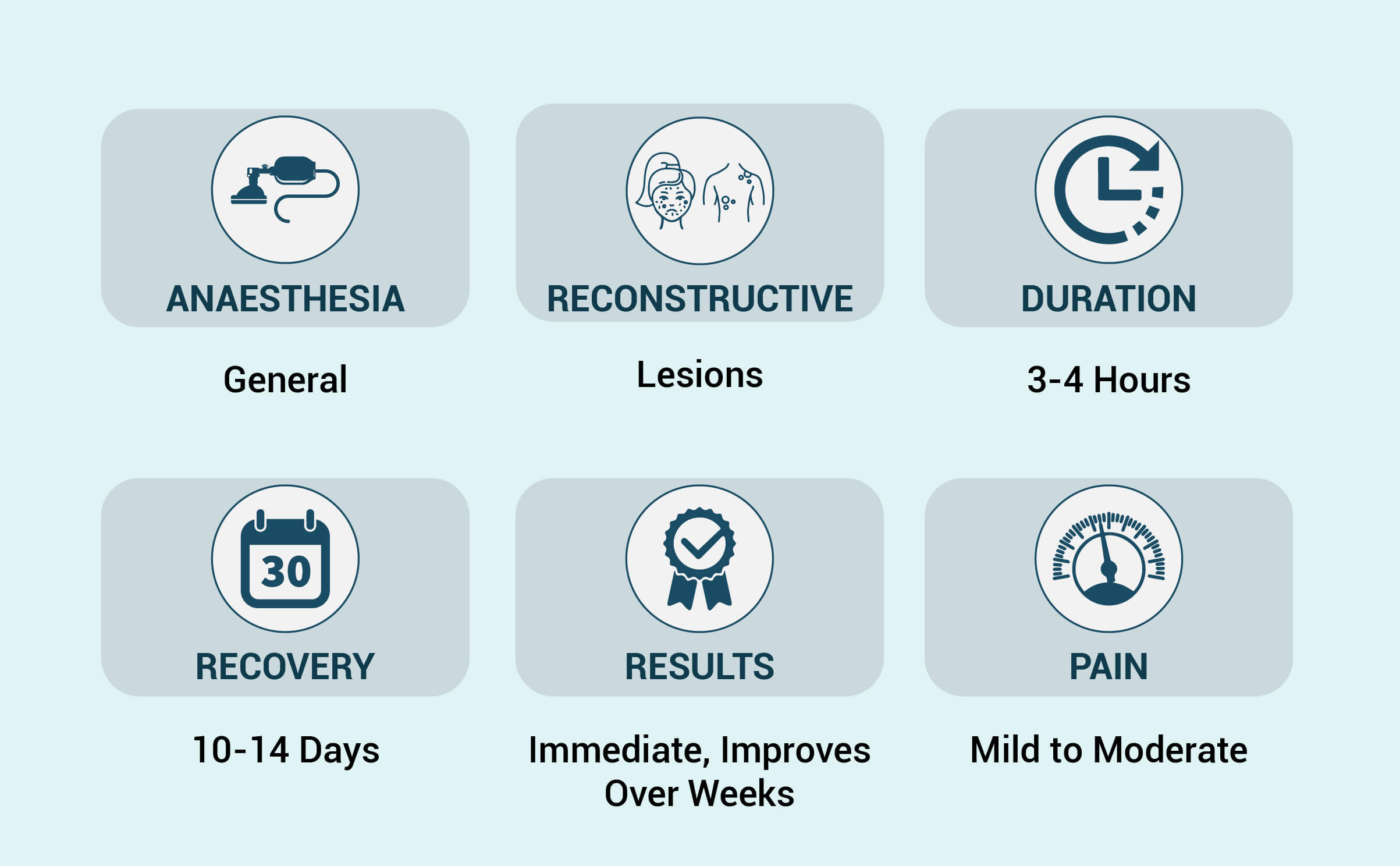Doctor for Premalignant Skin Lesions in Bandra, Mumbai
A skin lesion is any area of skin that differs from the surrounding skin in terms of color, shape, size, and texture. The most common cause of skin lesions is localized damage to the skin, such as sunburn or contact dermatitis. Others, however, are manifestations of underlying disorders, such as infections, diabetes, and autoimmune disorders. Skin lesions are generally benign, but some of them are malignant or premalignant, meaning they may lead to cancer.

What are Skin Lesions ?
Skin Lesion is an area of the skin that is different than the surrounding skin. This can be a lump, sore, or an area of skin that is not normal. It may also be a skin cancer.
What Causes Premalignant Lesions of Skin
Skin lesions can be caused by a variety of factors. Infections of the skin are usually caused by bacteria, viruses, fungi, or parasites transmitted through touch or through the air. Warts and chickenpox are examples of possible infections. Similarly, allergic sensitivities or health conditions, such as diabetes, can result in lesions. Skin lesions can also be caused by inherited genetic predispositions. It is more likely for some people to develop moles and freckles than for others.
Procedure
Skin lesion removal is a procedure to remove the lesion.
The different types of skin removal techniques are described below.
Shave Excision:
This technique is used for skin lesions that rise above the skin or are in the upper layer of skin.
Your doctor uses a small blade to remove the outermost layers of skin after the area is made numb. The area removed includes all or part of the lesion.
You usually do not need stitches. At the end of the procedure, medicine is applied to the area to stop any bleeding. Or the area may be treated with cautery to seal blood vessels shut. Neither of these will hurt.
Simple Scissor Excision:
This technique is also used for skin lesions that rise above the skin or are in the upper layer of skin.
Your doctor will grab the skin lesion with small forceps and lightly pull up. Small, curved scissors will be used to carefully cut around and under the lesion. A curette (an instrument used to clean or scrape skin) maybe used to cut any remaining parts of the lesion.
You will rarely need stitches. At the end of the procedure, medicine is applied to the area to stop any bleeding. Or the area may be treated with cautery to seal blood vessels shut.
Skin Excision- Full Thickness:
This technique involves removing a skin lesion in the deeper levels of the skin down to the fatty layer under the skin. A small amount of normal tissue surrounding the lesion may be removed to ensure it is clear of any possible cancer cells (clear margins). It is more likely to be done when there is a concern about a skin cancer.
Most often, an area the shape of an ellipse (an American football) is removed, as this makes it easier to close with stitches.
The entire lesion is removed, going as deep as the fat, if needed, to get the whole area. A margin of about 3 to 4 millimeters (mm) or more surrounding the tumor may also be removed to ensure clear margins.
The area is closed with stitches. If a large area is removed, a skin graft or flap of normal skin may be used to replace the skin that was removed.
Curettage and Electrodesiccation:
This procedure involves scraping or scooping out a skin lesion. A technique that uses high frequency electrical current, called electrodessication, may be used before or after.
It may be used for superficial lesions that do not need a full thickness excision.
Laser Excision:
A laser is a light beam that can be focused on a very small area and can treat very specific types of cells. The laser heats the cells in the area being treated until they "burst." There are several types of lasers. Each laser has specific uses.
Laser excision can remove:
Benign or pre-malignant skin lesions
Warts
Moles
Sunspots
Hair
Small blood vessels in the skin
Tattoos
Crypotherapy:
Cryotherapy is a method of super-freezing tissue in order to destroy it. It is most commonly used to destroy or remove warts, actinic keratoses, seborrheic keratoses, and molluscum contagiosum.
Cryotherapy is done using either a cotton swab that has been dipped into liquid nitrogen, with a spray canister containing liquid nitrogen, or with or a probe that has liquid nitrogen flowing through it. The procedure usually takes less than a minute.
The freezing may cause some discomfort. Your doctor may apply a numbing medicine to the area first. After the procedure, the treated area may blister and the destroyed lesion will peel away.
MOHS surgery:
Mohs surgery is a way to treat and cure certain skin cancers. Surgeons trained in the Mohs procedure can do this surgery. It is a skin-sparing technique that allows skin cancer to be removed with less damage to the healthy skin around it.
 WhatsApp
WhatsApp